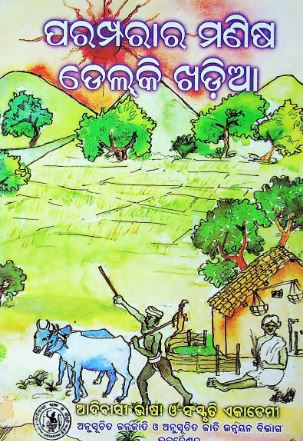The essence of a community can often be found in its traditions and cultural practices, which serve as the backbone of its identity. In this regard, “Paramparar Manisa Delki Khadia,” edited by Judhistir Sahu and Anant Chandra Sahu and published in 2006, provides an insightful exploration of the Khadia tribe, a group whose rich cultural heritage is woven into the very fabric of Odisha’s diverse history.
The Khadia tribe, an ancient community residing primarily in the districts of Odisha, is characterized by its unique customs and socio-cultural practices. Historically, the Khadias have lived in harmony with nature, subscribing to a lifestyle that emphasizes sustainability and communal living. Their traditions, passed down through generations, reflect a deep respect for the environment and a profound understanding of the natural world.
In “Paramparar Manisa Delki Khadia,” the authors delve into the myriad traditions that define the Khadia people. These traditions are not merely relics of the past; they are living practices that continue to shape the community’s identity. The book encapsulates various aspects of Khadia life, including their folklore, rituals, and festivals, which are integral to their social fabric.
The significance of oral traditions in Khadia culture cannot be overstated. Stories, myths, and legends are not only entertaining but also serve as moral guides for the community. They impart wisdom, emphasize communal values, and provide a sense of belonging among the people. The authors beautifully document these narratives, showcasing their role in preserving the tribe’s heritage.
Central to the Khadia tribe’s identity are their cultural practices, which are deeply intertwined with their spiritual beliefs. “Paramparar Manisa Delki Khadia” sheds light on various rituals that mark significant life events such as birth, marriage, and death. These rituals are often accompanied by traditional music, dance, and art forms unique to the Khadia tribe.
One notable aspect of Khadia culture is their rich tradition of dance and music, which plays a vital role in celebrations and festivals. The book highlights how these performances not only offer entertainment but also reinforce social bonds and pass on cultural knowledge to younger generations.
While “Paramparar Manisa Delki Khadia” celebrates the Khadia tribe’s rich traditions, it also addresses the numerous challenges they face in the contemporary world. The encroachment of modernity, coupled with environmental degradation, poses a significant threat to the preservation of their cultural heritage. The authors discuss the importance of cultural resilience and the need for advocacy to protect the tribe’s way of life.
“Paramparar Manisa Delki Khadia” serves as an essential resource for anyone interested in understanding the intricate relationship between tradition, culture, and identity in the context of the Khadia tribe. Through the meticulous research and passionate storytelling of Judhistir Sahu and Anant Chandra Sahu, readers are invited to delve into a world where customs and beliefs thrive in harmony with nature. As we reflect upon the insights offered in this book, we are reminded of the importance of preserving the unique cultural narratives that contribute to the rich diversity of our world. The Khadia tribe’s story is not just theirs; it is a part of the larger human experience that calls for recognition, respect, and preservation.
Books Info
| Books name | Paramparar Manisa Delki Khadia |
| Author | Judhistir Sahu, C.; Anant Chandra Sahu, Ed. |
| No Of pages | 313 |
| Publisher | Friends Publishers |
| Publication | 2006 |
| Printed At | Nandakishor Press |
| Distributor | NA |

